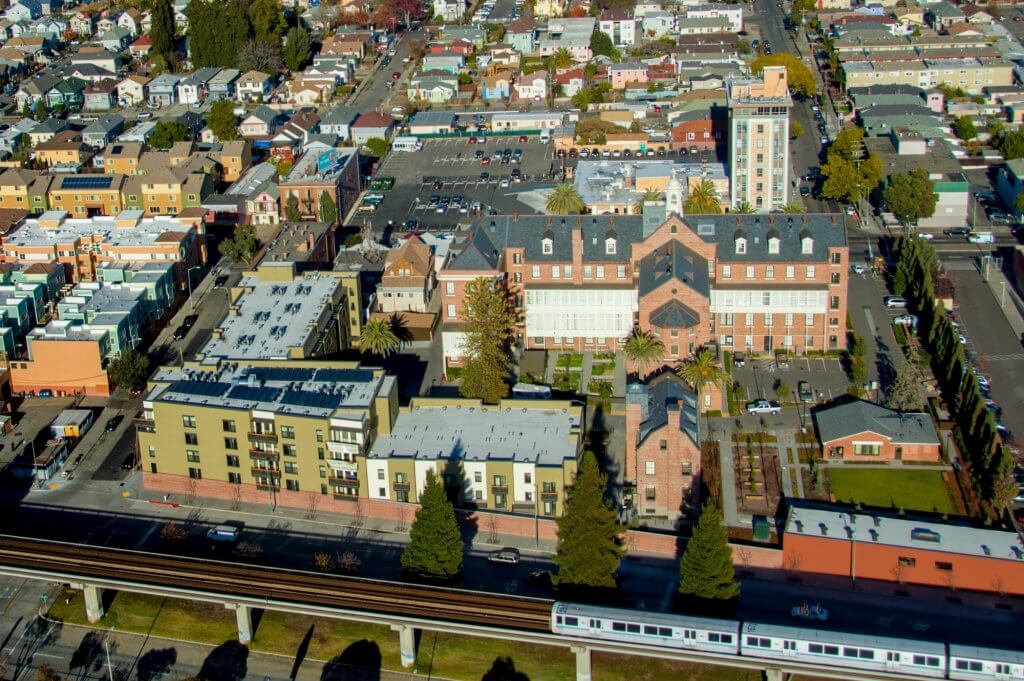Housing on the Ballot: How Californians Voted on Key Measures in 2020
Published On December 5, 2020
The November 2020 election has turned out to be one of the most consequential in recent memory, not just nationally, but also in California. While the state’s electoral college votes were never in doubt, voters also decided the fate of several hotly contested ballot measures. Hundreds of millions were spent in what ended up being the state’s most expensive election ever for proposition campaigns. This included a handful of statewide measures with important implications for housing, including measures to reform Proposition 13 and expand the ability of cities to enact rent control. Voters were also asked to weigh in on dozens of local measures relating to height limits, affordable housing dollars, and tenant protections. Against the backdrop of record breaking turnout—as well as a prolonged and growing housing crisis exacerbated by the COVID-19 pandemic—these local races have allowed us to take the pulse of communities across the state on housing-related issues.
In the end, the results were mixed. Here’s a rundown of some of the more noteworthy races we’ve been tracking.
Statewide propositions offer split results on housing
Of the dozen California ballot initiatives, three had implications for housing. Two propositions directly addressed parts of the property tax legacy of Proposition 13, passed in 1978, albeit in very different ways. Proposition 15 would have created a “split roll” property tax system, uncoupling the state’s commercial property tax structure from the structure for residential properties, which would have resulted in billions of additional tax revenue for the state. While Proposition 15 garnered the most total votes of any statewide measure, with over 16.8 million votes cast as of this publication, it ultimately failed 48 to 52 percent. However, the relatively narrow defeat may signal that Proposition 13’s status as a “third rail” issue may be shifting.
Proposition 19, which also addressed the state’s property tax structure, was approved by a vote of 51 to 49 percent. A key part of the measure is the elimination of the property tax break given to heirs of property used for investment purposes, which has been called the “Lebowski Loophole”. This change may have wide-ranging implications, as roughly 650,000 properties across the state have been inherited in the last decade, though not all are used as investments. Proposition 19 also expands an existing state program to allow homeowners who are 55 years or older to transfer their existing property tax basis to another property anywhere in the state, even if it is more expensive than the home they currently live in.
Finally, voters rejected Proposition 21 by a vote of 40 to 60 percent. This measure would have expanded the ability of cities to enact more restrictive forms of rent control than currently allowed by California’s existing regulations enacted by the Costa-Hawkins Rental Housing Act of 1995. Specifically, cities would have been able to expand rent control to homes older than 15 years (as opposed to homes built before 1995), as well as to single-family rentals. The initiative would also have capped the amount that owners of rent-controlled units would be able to raise the rent upon vacancy of a unit to a total of 15 percent of the previous rent charged, as opposed to the unlimited amount that owners can currently charge a new tenant (known as “vacancy decontrol”). The loss of Proposition 21 echoes the result of Proposition 10 two years earlier which also would have also significantly altered the rent control landscape in California.
Major cities see housing wins
In Los Angeles County, the success of Measure J, which redirects 10 percent of the county’s unrestricted general funds away from the criminal justice system, could result in significant new dollars for housing programs, as well as new investments in mental health, job training programs, and other initiatives to benefit communities disproportionately impacted by racial injustice. Measure J was proposed as a direct result of the renewed recognition of the historic and current underinvestment in communities of color and the disproportionate city spending on law enforcement and incarceration. In addition to funding affordable housing, the measure specifically notes that other housing-related uses including rental assistance and housing vouchers may also be funded through this new authority.
San Diego saw mixed results on two housing-specific initiatives. On the one hand, voters approved Measure E, which relaxes some specific area height restrictions in the “coastal zone” in order to accommodate new housing. Height limits in the “coastal zone” have been in place since 1972 and are generally viewed as sacrosanct, making any reduction in these regulations a significant shift. In addition to the passage of Measure E, Todd Gloria—a vocal pro-housing growth candidate—was elected mayor in a close race. However, the city’s $900 million affordable housing bond, Measure A, failed despite receiving 57 percent of the vote because it was shy of the two-thirds majority needed for the passage of restricted bond approvals.
San Francisco passed a significant increase in its transfer tax with Proposition I, doubling the existing levy from 2.25 to 5.5 percent on sales of property over $10 million, and 6 percent on property sold over $25 million. The new tax could raise around $100 million annually in new revenue, which the measure’s proponents have pledged to use for the creation of affordable housing as well as rental assistance.
Smaller cities show continued tensions on local housing efforts
A handful of measures addressed zoning reforms in smaller communities, and the results demonstrated a continued reluctance to loosen restrictive regulatory barriers. In Alameda, voters soundly rejected a measure to rescind a decades-old ban on multifamily construction in some parts of the city. Measure Z, which failed 40 to 60 percent, was opposed by groups concerned that more growth would overwhelm the island city’s infrastructure.
Across the bay in San Mateo, the final votes are still being tallied for a measure that would extend the city’s existing height and density limits. Measure Y, winning by just 34 votes as of Thursday November 18th, would grant a ten-year extension for San Mateo’s long-standing limits on residential heights and units per acre. A compromise initiative—Measure R—would have also extended the city’s growth restrictions, though the downtown area would have been exempt. That measure failed 54 to 46 percent.
Tenant protections stall
Just as Proposition 21 suffered a significant defeat at the state level, the handful of local rent control measures on the ballot also fared poorly. In Sacramento, where the city recently implemented a modest form of rent control, disagreements between city leaders and tenant advocates resulted in Measure C going to the ballot. The measure would have required the city to implement a more strict rent control program, capping rent increases at 5 percent (the city’s ordinance currently caps rent increases at 5 percent plus inflation) and requiring the creation of a rent board. Measure C was defeated, 39 to 61 percent.
Similarly voters in Burbank rejected Measure RC, a proposal to create a new rent control ordinance that would have capped rent increases at 7 percent annually. The measure failed 36 to 64 percent. Culver City provided one bright spot for rent control proponents as voters rejected Measure B, which would have rolled back the city’s recently-adopted rent control policy.
Measure C in Mountain View illustrates the tensions between efforts to assist individuals and families experiencing homelessness and the fears of property owners. Voters approved an ordinance banning RVs from parking on city streets, 57 to 43 percent.
There are few sweeping conclusions to be drawn from the 2020 election, other than that issues around land use and tenant protections in California continue to be contentious. One thing is certain however: California’s housing crisis will continue for the foreseeable future absent larger structural changes in how housing is permitted, financed, and built. Cities are limited in what they can do to create more housing, particularly affordable and moderate-income housing, due to limited sources of revenue and reluctance to change land use patterns. To that end, policymakers in Sacramento are faced with another important year in 2021, and we at the Terner Center will be tracking legislative efforts to alleviate the housing crisis and providing research and data to inform these conversations.





